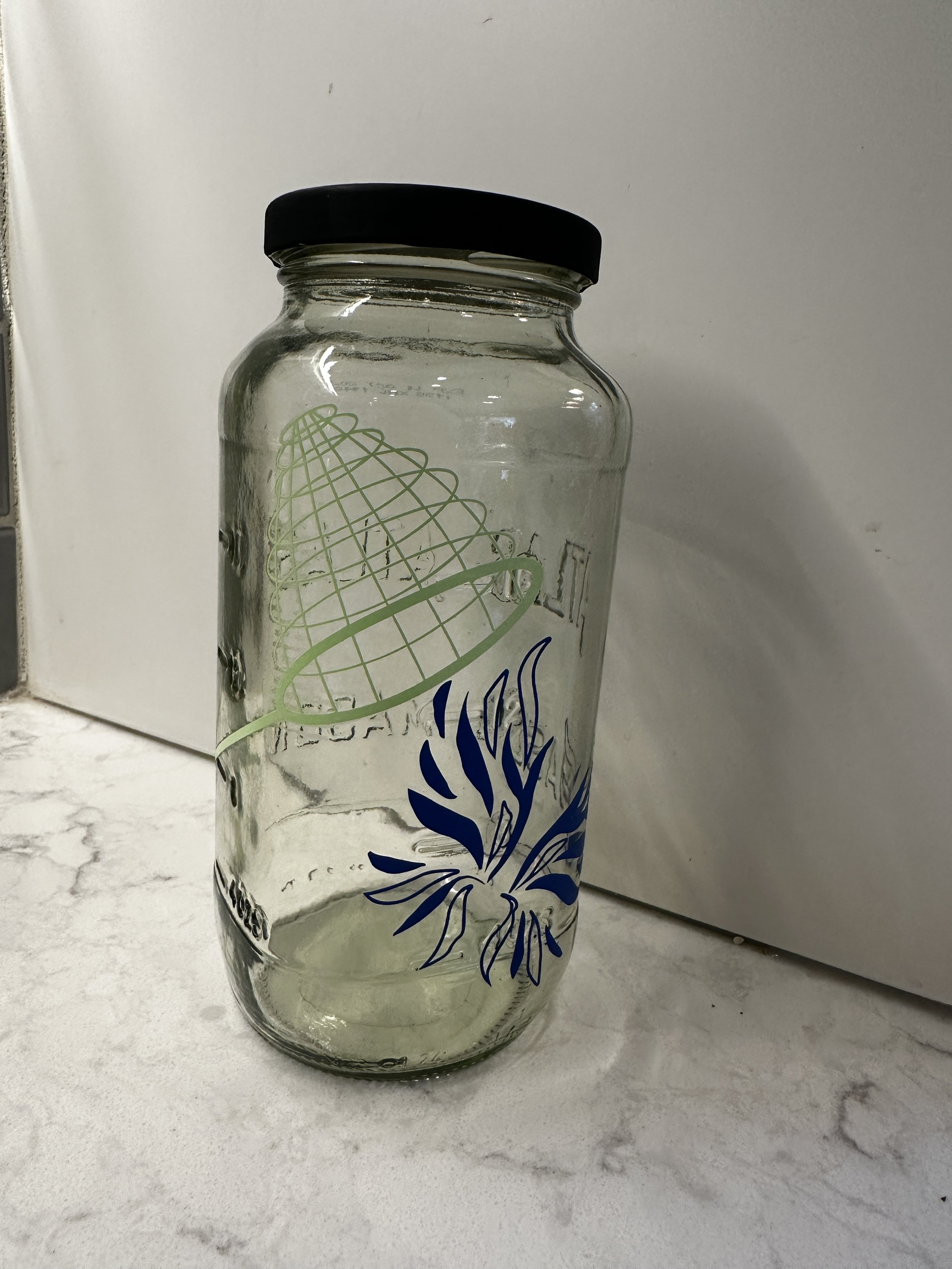Pasta La Vista - Pasta Western
For this project, the goal was to create an animation based on a classic movie genre cliché. I chose the spaghetti western, leaning into the pun by designing an entire town, cast of characters, and props with pasta-inspired themes. The specific cliché I focused on was the dramatic chase, standoff, and gunfight sequence, a hallmark of western films and often the most intense moment of the story. I created the scenery in Adobe Photoshop, illustrated all characters and objects in Procreate, and brought the scene to life using Adobe After Effects. To add a playful twist, I incorporated pasta-related puns, some of which I generated with the help of AI, enhancing the humor and reinforcing the thematic wordplay. The final animation blended genre homage with whimsical creativity, turning a familiar cinematic trope into something both unexpected and entertaining.
Balloon Dog:
This project was an exploration of textures, materials, and animation techniques in Cinema 4D. I began by selecting an unconventional subject (a balloon dog) as a playful form to test a variety of materials. I experimented with an acrylic paint texture, metallic finishes, and dynamic lighting effects, including projecting vibrant, colored light within a dome to create striking reflections on the metallic surface. This experimentation inspired me to expand the project into an animation. In the animation concept, balloon dogs are assembled on a conveyor belt. One breaks free and throws a party in a separate room, only to be caught and returned to the belt, creating a continuous loop. The result blends technical experimentation with whimsical storytelling, turning a simple shape into a character with personality and charm.
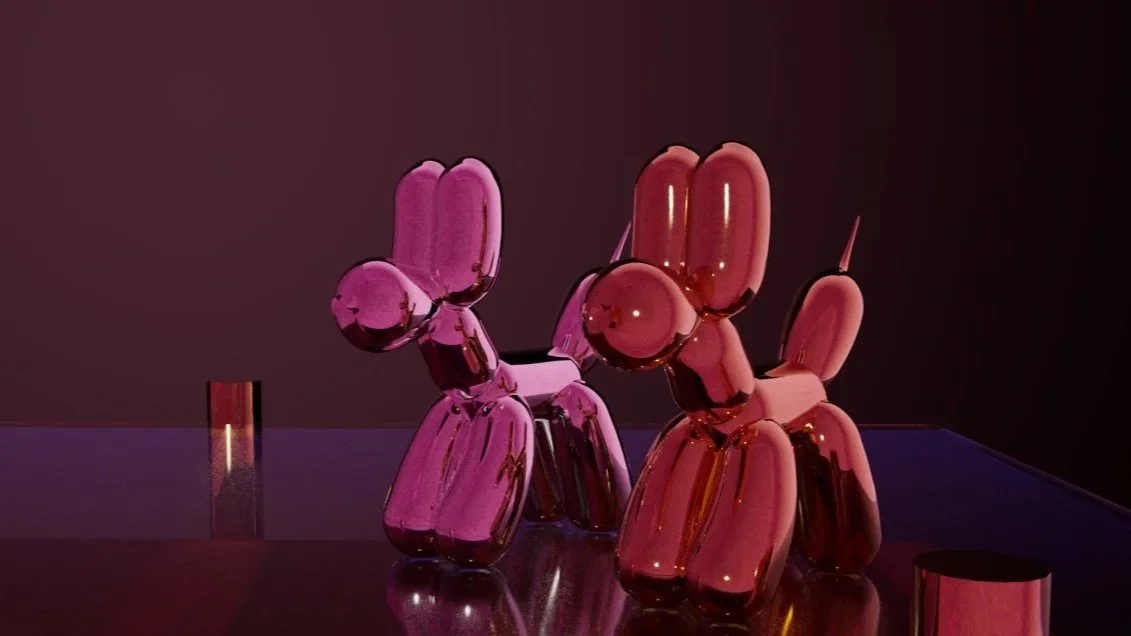
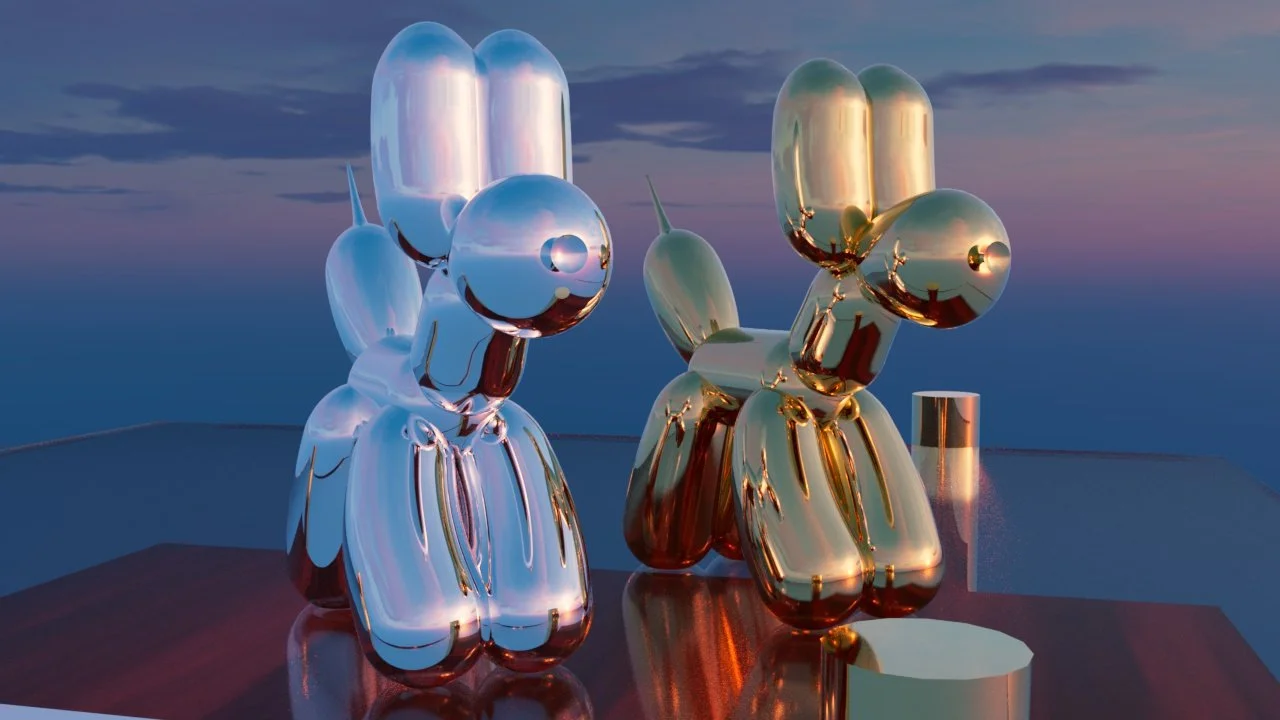

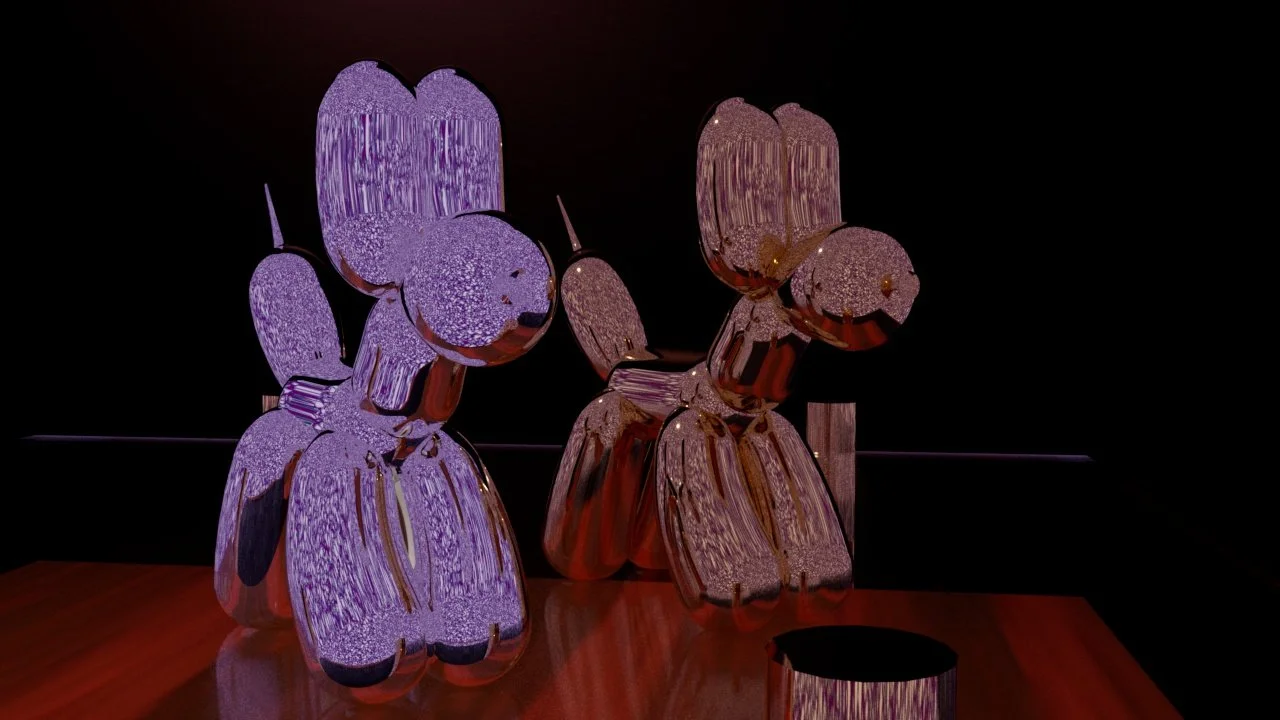


Shell Phone:
This project was what first sparked my fascination with experimenting in textures and materials, a curiosity that later inspired my Balloon Dog exploration. The assignment challenged me to create both an organic object and a man-made object in Cinema 4D, then merge them into a single “cyborg” form. The “cyborg” could be simply swapping materials between the two, splitting them in half and fusing the pieces, or borrowing distinct features from one object to integrate into the other. From the start, I knew I wanted the final “cyborg” piece to be a shell phone, an object that had fascinated me since childhood. With my growing 3D art skills, I saw an opportunity to bring this whimsical idea to life. I chose a retro brick phone for its nostalgic appeal and a conch shell for its intricate, organic form, perfect for creating a visually striking and unconventional shell phone. Along the way, I explored a variety of custom materials, experimenting with surface details, reflections, and colors to make the design feel tangible and dynamic. Later, I expanded the concept into an animation: a looping conveyor belt that transforms shells into shell phones, playfully bringing the idea to life in motion.





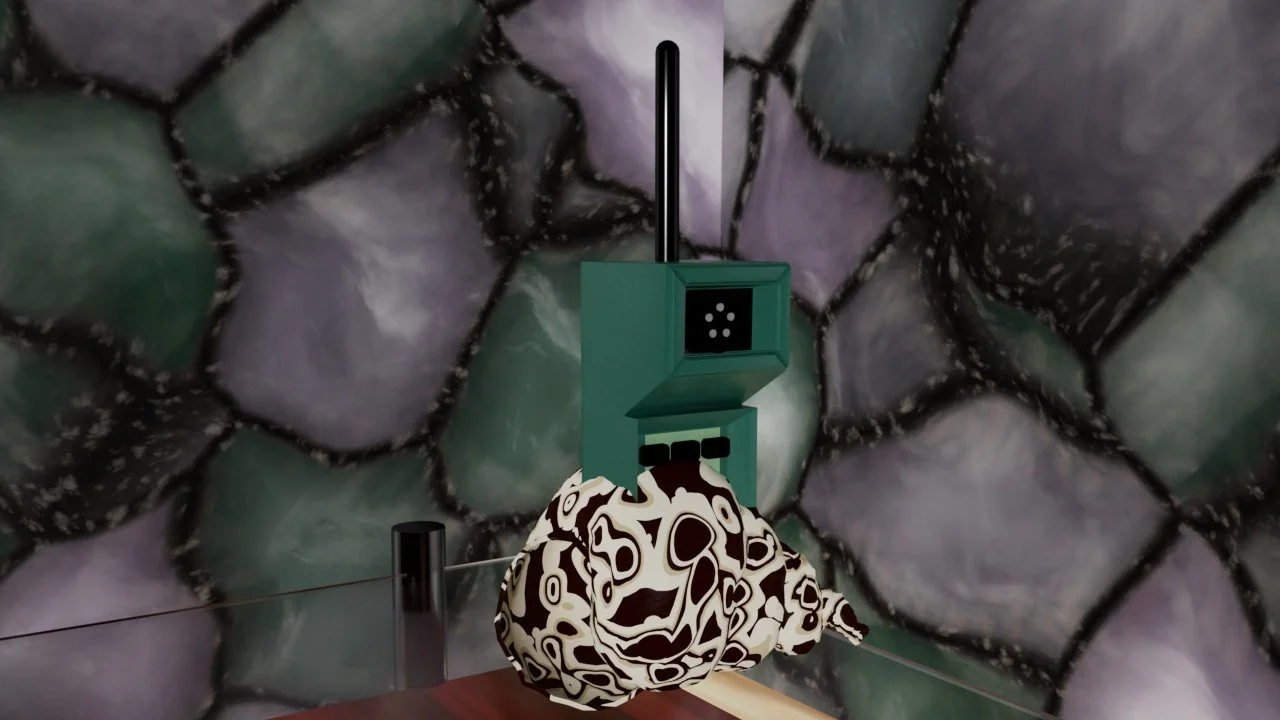
Alternate Eugene - Medieval Fairy War:
This capstone project reimagined Eugene as a medieval walled city of stone and steel, born from a “fairy war” sparked when villagers cut down a magical willow tree. Alongside building the world’s backstory, I created artifacts for a fictional time capsule—posters, signage, clothing, fairy catchers, and commemorative artwork—each tied to moments in the conflict or its resolution.
The project sharpened my expertise in preparing intricate vinyl-cut designs and applying them to both fabric and hard surfaces. I learned to manage fine details and negative space through precise file setup, cut-path adjustments, and careful weeding, as well as mastering the temperature, pressure, and alignment required for professional T-shirt press results.
I also used AI to support design ideation and writing. Starting with hand-drawn sketches, I iterated on concepts like fairy wings, regal stink bomb orbs, and family crests, while AI-assisted translations turned modern copy into authentic medieval text. This blend of craftsmanship and digital tools brought depth, polish, and playful authenticity to the final collection.
Signage:
AI Ideation:
Guild Crests:
Fairy Catcher:
Plant Life Cycle:
With this project, I explored the life cycle of a plant, drawing inspiration from my own experiences as a plant enthusiast—having nurtured some to thrive while others I inadvertently let die. The project combined upcycling, electronics, and coding to create an interactive representation of plant growth. I chose a light-sensitive trigger and incorporated a photocell, which I placed inside a sun I crafted from an old saw blade painted yellow. Using an Arduino, I wired and programmed a series of plant images to respond to light: when the photocell was covered, the plant appeared to wither, and when exposed to light, it flourished into a vibrant, green form. This project allowed me to merge physical materials, environmental interaction, and digital coding into a cohesive, playful exploration of life and growth.












Trash Panda Raider Run:
My final project in my Game Art class, I designed and developed a simulation game in Unity centered around one of my favorite creatures: raccoons, affectionately known as “trash pandas.” Players take on the role of a raccoon navigating a hilly terrain with two main areas, starting in a trailhead parking lot surrounded by cars and trash cans. I created collectible food items scattered throughout the environment, programmed so that approaching them triggers a munching sound and adds items to the player’s trash can. Following these collectables through the forest eventually leads to a hidden house where players earn a jackpot reward. While the game includes some minor glitches such as occasionally passing through items, falling off the terrain, or encountering holes in the landscape. While there are glitches since it was my first experience working in Unity, building this game and working in this program provided valuable skills in 3D spatial design, interactive programming, and game environment creation. This project allowed me to combine creativity, humor, and technical development in an immersive simulation experience.
*The game icon to the right is an image I found from google but felt it represented the game. The food and raccoon in the game are unity assets that I purchased on the unity website since I wanted to focus my time on the terrain and learn the skill of importing asset packs from the Unity store.













